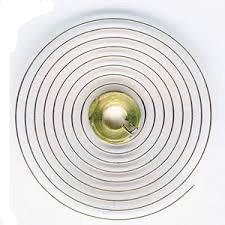Problems with polishing a watch case
-
Recently Browsing
- No registered users viewing this page.
-
Topics
-
Posts
-
That's strange. I re-serviced a couple of watches after about 4-5 years and there looked to be no loss of oil. These are watches I very rarely wear, and I probably over-oiled a bit back then.
-
That's nice! Cousins do know how to make money in a way that benefits themselves and their customers. Repairing wouldn't be the same w/o them. For most purposes, 10ml goes a long way. However, with a few exceptions, I’ve started applying Fixodrop to all parts that come into contact with grease or oil, so I went ahead and got the 100ml bottle. I just serviced a watch that I last worked on seven years ago, and to my surprise, it was practically dry—almost no oil left. I suppose it either evaporates or migrates over time? I just now browsed the available options and noticed that Fixodrop 8981 ES/BS-10 (Ready to Use) is a bargain at just £104 per 100ml. Well, that is, compared to Fixodrop 8982 ES/BS-20 (Ready to Use), which goes for £850 per 100ml. According to ChatGPT, 8981 is intended for inexpensive watches serviced by enthusiasts, while 8982 is geared toward high-end timepieces handled by professionals. Or could it be that Moebius found a way to squeeze more money out of the same product? Hmm...
-
Often times the belief is when you're making small parts you Need a small lathe like a watchmaker's lathe to make small parts. But for gear cutting its oftentimes better to have something bigger. Then realistically you might end up with several things not just one machine for everything. Depends upon your machining skills and the equipment you have. This is where having a slightly bigger equipment allows you to make all kinds of things where if you have a tiny equipment you can not really make bigger stuff it's very awkward. Then indexing is all kinds of ways to do indexing a very popular way is with the stepping motor a worm gear like at the link below https://www.ebay.com/itm/191714031261 What's interesting with something like this is you can micro step at end up with basically a infinite quantity of indexing. But you still have to build some things. For instance here's an interesting YouTube channel and an interesting video. His watchmaker's lathe is a little bigger than what I'm typically used to for watchmakers lathe. As a rather interesting cross slide and notice he makes just about everything. Then he gets the indexing something purchased surplus but it's basically just a worm gear stepping motor his has way more hands-on control but it does the exact same thing as the one up above. Then if you read the description of the video is in a shop of creative people to build all kinds of nifty things like the stepper motor controller etc.
-
Yes they are a silly price. Fortunately the 10ml Moebius bottle has a metal gauze in the top, so no need for a separate bottle. They shouldn't be! Mad idea. I changed them for coloured ones
-
There were colourless cap jewels on an oris 581 KIF I was looking at. I was convinced I’d lost them when I put the jewel into heptane and couldn’t find the caps. I didn’t know colourless ones were a thing!
-







Recommended Posts